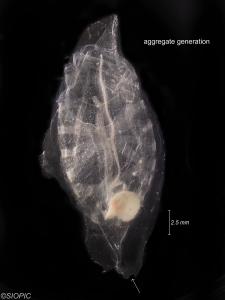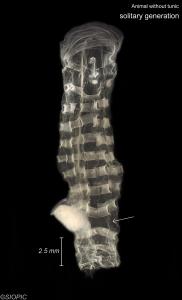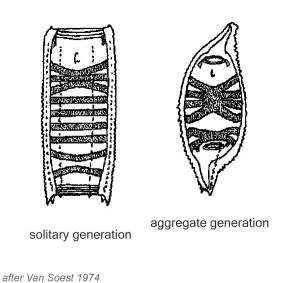Salpa aspera
The aggregate generation has a thick tunic with etchinated surface and bifid posterior projection. Body muscle bands 1-4 and 5-6 are dorsally fused. The solitary generation also possesses a thick test serrated longitudinally. Body muscle bands 1-3 are dorsally fused and 8-9 converge but do not meet.
This species can often be confused with Salpa fusiformis. S. aspera possesses more muscle fibers within the body muscle bands and an etchinated tunic.
High density swarms have been reported for this species.
Bone, Q. (1998) The biology of pelagic tunicates. Oxford University Press, Oxford.
van Soest, R.W.M. (1974) A revision of the genera Salpa Forskal, 1775, Pegea Savigny, 1816, and Ritteriella Metcalf, 1919 (Tunicata, Thaliacea). Beaufortia 22: 153-191.
Wrobel, D. and Mills, C. (1998) Pacific Coast pelagic invertebrates: a guide to the common gelatinous animals. Sea Challengers, Monterey Bay Aquarium, Monterey, CA.
Yount, J.L. (1954) The taxonomy of the Salpidae (Tunicata) of the central Pacific Ocean. Pacific Science 8: 276-330.




